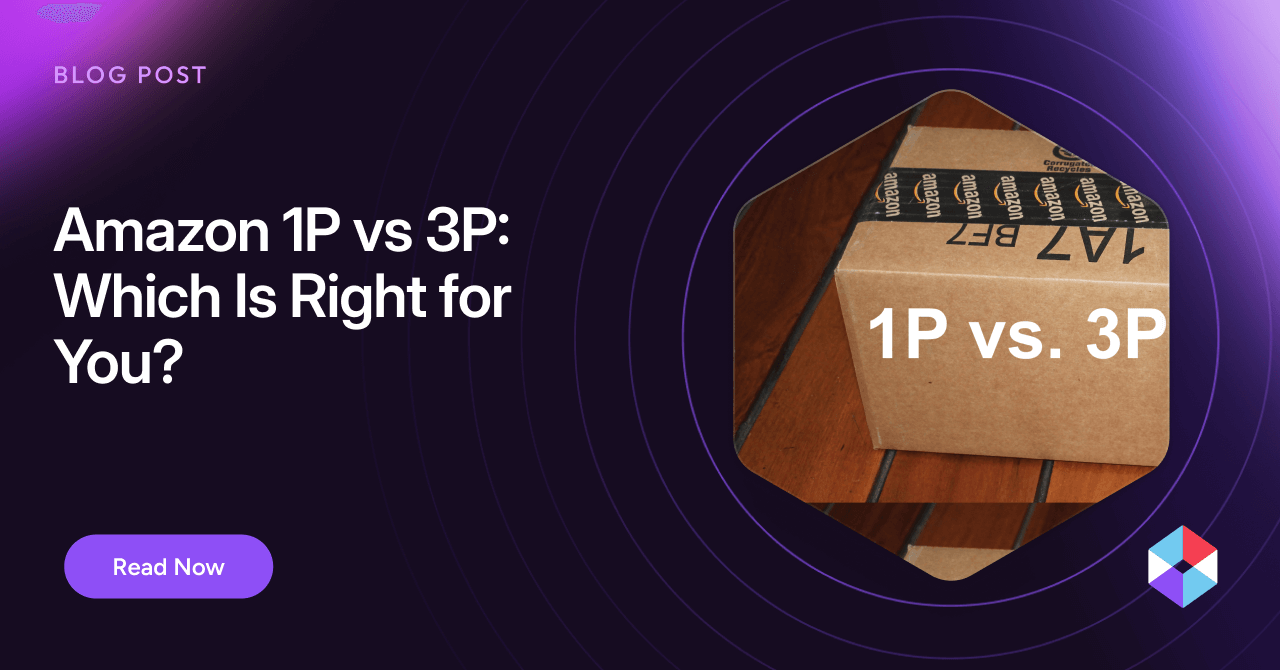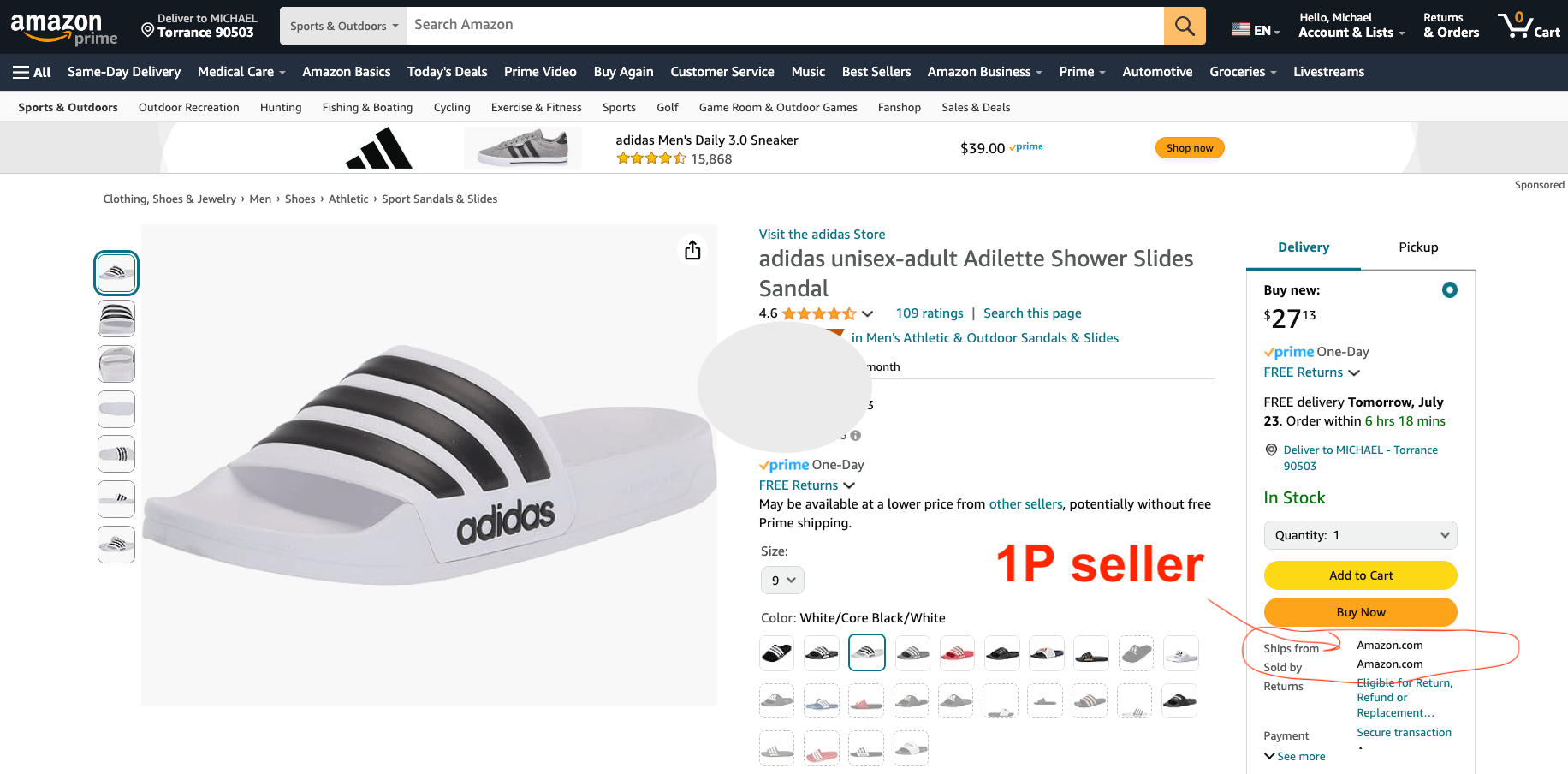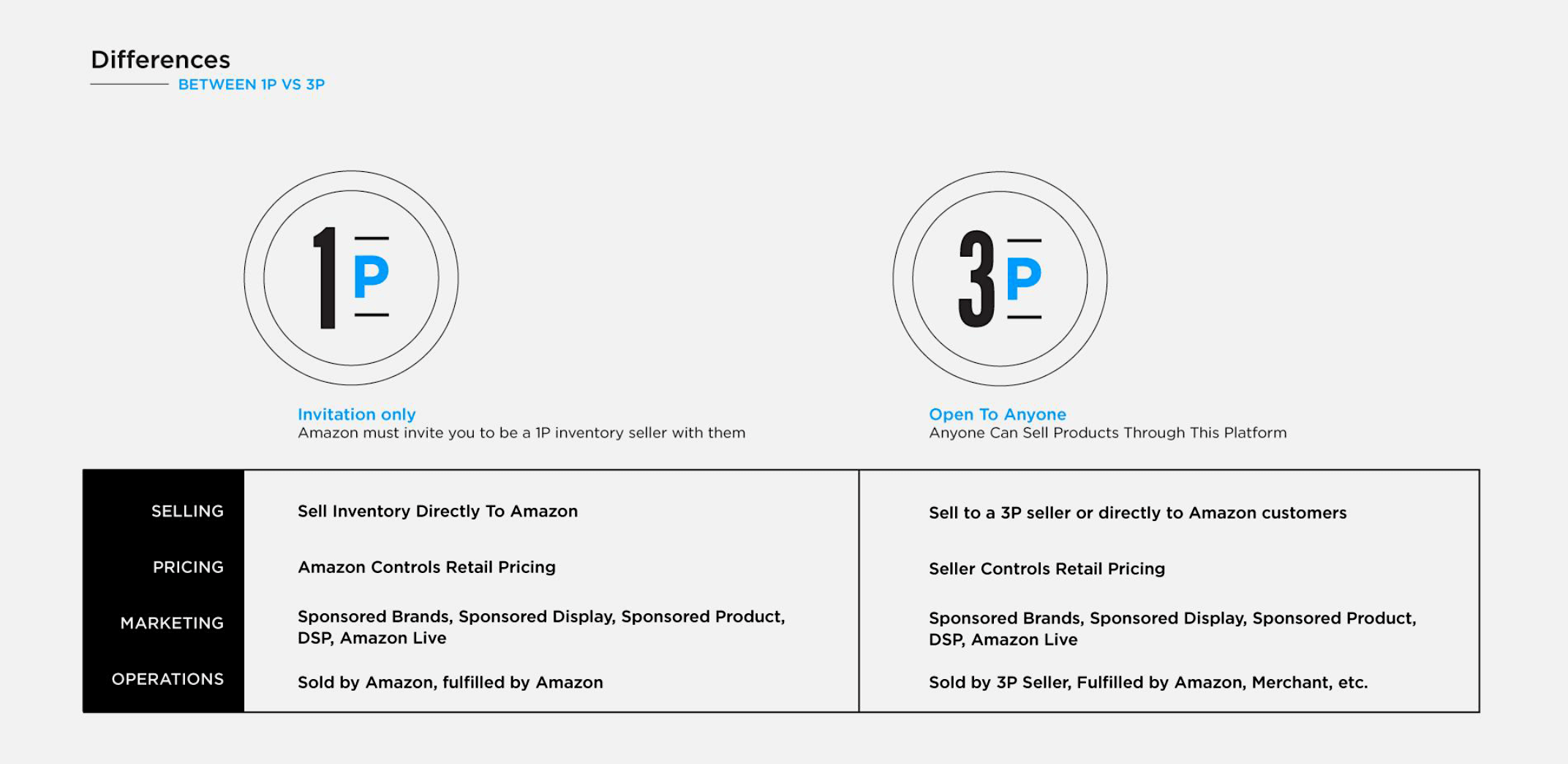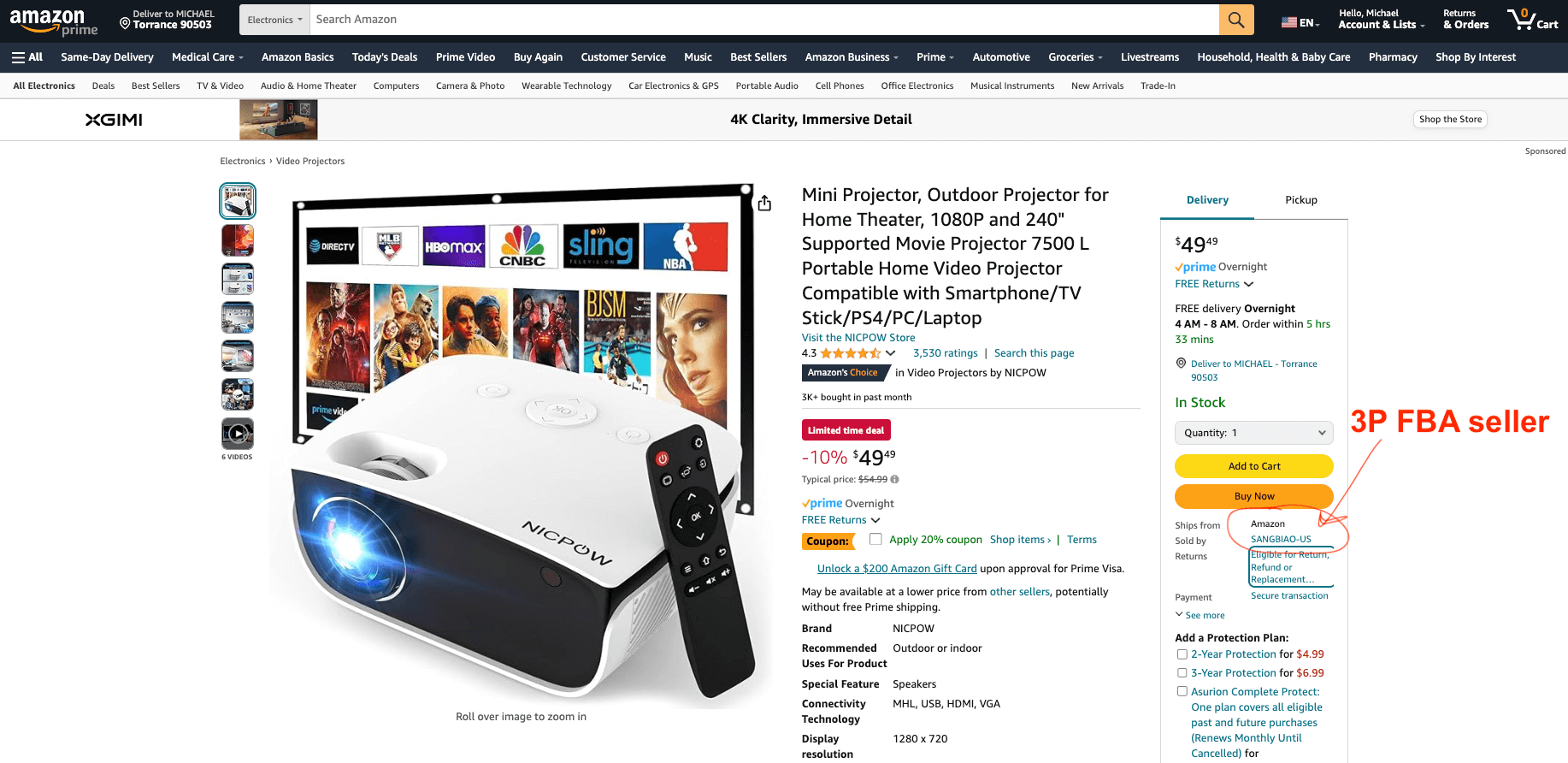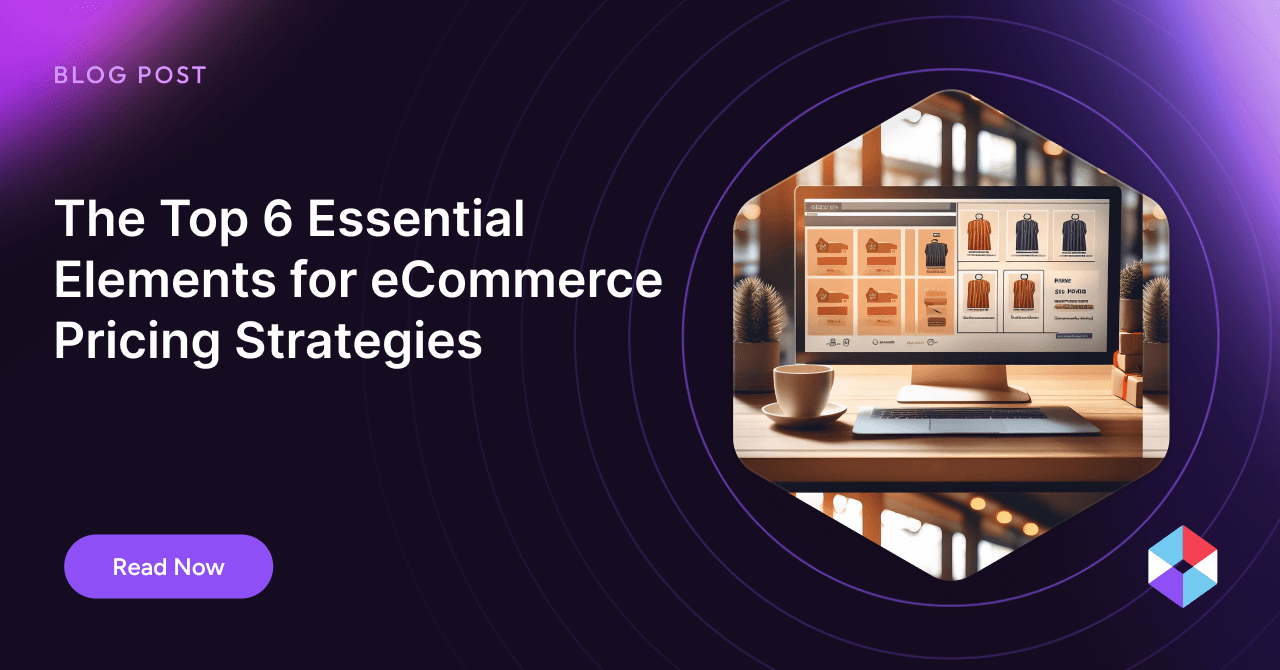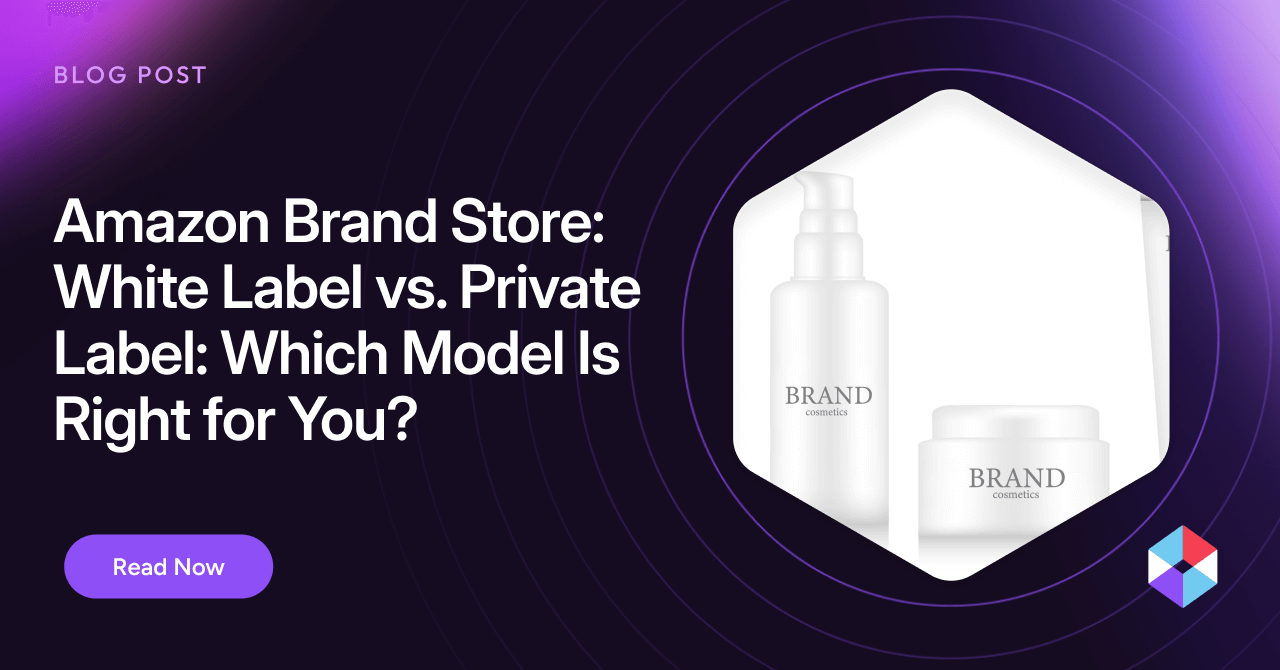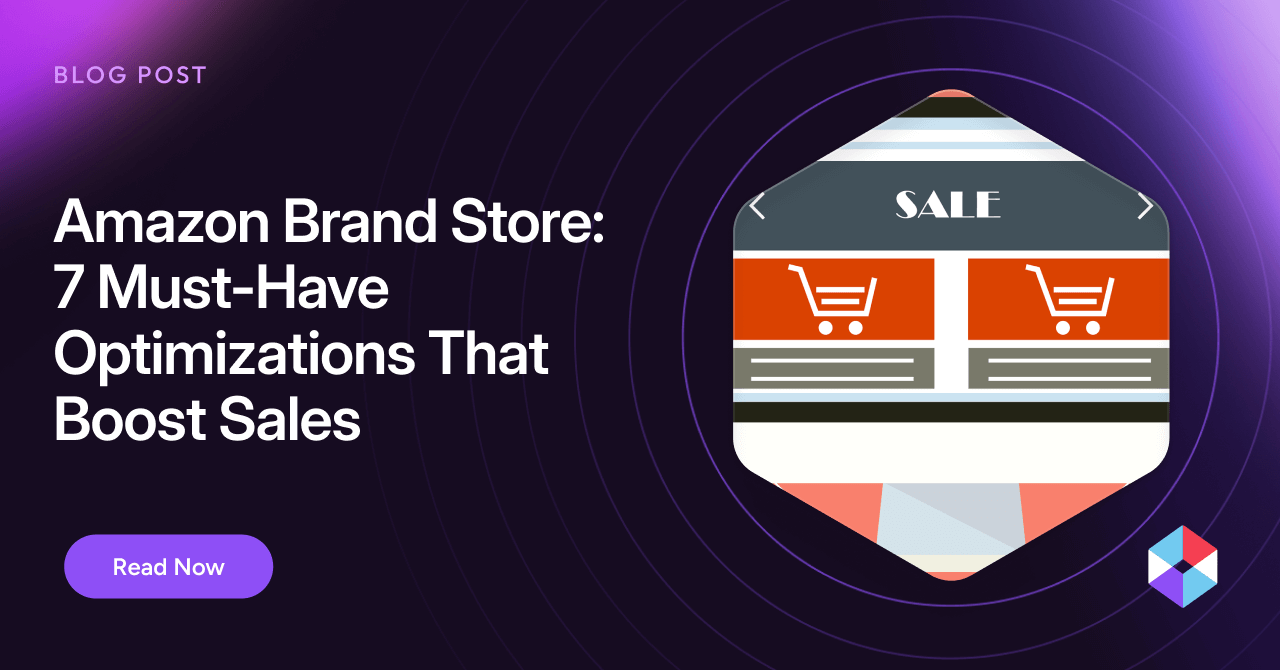The Amazon marketplace is vast and full of potential for sellers, but finding success means making smart choices from the start. One critical decision is whether to become a 1P (first-party) or 3P (third-party) seller. 1P vendors sell their items directly to Amazon, which then resells them to shoppers. In contrast, 3P sellers use Amazon as a platform to sell their goods directly to customers.
This choice isn’t just about how you sell; it’s a decision that will fundamentally shape your brand’s growth, profitability, and overall success on Amazon. While it may seem easier to choose 1P, 59% of items sold on Amazon in 2023 came from 3P sellers, showing how popular this model is.
Should you focus on control and building your brand as a 3P seller, or go for volume and visibility as a 1P vendor? Whether you’re new to selling online or an old pro, you’ll need to know the ins and outs of both models.
Selling Amazon 1P: What is it, and how does it work?
Selling on Amazon as a first-party (1P) vendor means partnering directly with Amazon as a wholesale supplier, not a retailer. You focus on producing and supplying high-quality products, sell them in bulk to Amazon, and then Amazon takes care of the retail side.
This is how it typically works:
- Amazon invites established brands with proven track records and high-demand products to become 1P vendors.
- If accepted, you’ll gain access to Vendor Central, a platform where you can manage your relationship with Amazon. This includes tracking inventory, processing purchase orders, and analyzing sales data.
- Amazon forecasts demand for your products and sends you purchase orders. You then ship your products directly to Amazon’s fulfillment centers.
- Once Amazon receives your products, they own the inventory. Then, they list the items on the marketplace, set the prices, and handle all aspects of sales and delivery to the customer.
Pros and Cons of Selling Amazon 1P
Pros of Selling Amazon 1P
- Increased Brand Credibility – Amazon is a well-established brand. When your products are listed as ‘Ships from and Sold by Amazon,’ it instills trust in customers, boosts your brand’s credibility, and increases customer confidence.
- Simplified Logistics – Amazon handles storage, fulfillment, customer service, and returns—so you can focus on product development and other core business areas.
- Potential for High Sales Volume – As the world’s largest online marketplace, Amazon can drive significant traffic and sales volume to your products. Their marketing efforts and Prime eligibility can further increase your product’s visibility and reach.
- Access to Premium Marketing Services – 1P vendors get access to Amazon Marketing Services (AMS) and other premium advertising options not available to 3P sellers.
Cons of Selling Amazon 1P
- Less Control Over Pricing and Branding – Amazon sets the retail prices for your products, and you have limited control over how your brand is presented on the platform, which can impact your brand image and profit margins.
- Lower Profit Margins – As a wholesaler, you’ll be selling your products to Amazon at wholesale prices, which are lower than retail prices. Your profit margins are lower compared to selling 3P.
- Payment Terms – Amazon typically has longer payment terms than what 3P sellers experience, which can impact your cash flow if you’re a smaller business.
- Potential for Chargebacks – If your products don’t meet Amazon’s standards or you fail to meet their shipping requirements, you may face chargebacks, which can eat into your profits.
Selling Amazon 3P: What is it, and how does it work?
In the Amazon 3P (third-party) model, you’re an independent retailer operating your own storefront within the vast Amazon marketplace. You sell your products directly to customers, giving you greater control over your brand, pricing, and customer interactions. However, it also comes with the responsibility of managing all aspects of the selling process.
Here’s how it works:
1. Registration and Account Setup
- To get started, you’ll need to create a seller account on Amazon Seller Central. This involves providing your business information, tax details, and bank account information for receiving payments.
- Amazon provides two selling plans: Individual and Professional. The Individual plan is ideal for those selling less than 40 items monthly, while the Professional plan is designed for businesses selling more than that.
2. Product Listings
Once your account is set up, you can start creating optimized product listings, which include detailed descriptions, high-quality images, and accurate pricing information. You can leverage Amazon’s A+ Content features to create visually appealing and informative product pages that include features like infographics, fresh product demos, or image carousels.
3. Fulfillment Options
You have two primary options for getting your products to customers:
- Fulfillment by Amazon (FBA) – You send your products to Amazon’s fulfillment centers, and they handle the storage, packing, shipping, customer service, and returns. This option makes your products eligible for Prime shipping, a major draw for many Amazon customers.
- Fulfillment by Merchant (FBM) – You store and ship your products yourself. This gives you more control over the fulfillment process but also requires more work on your end.
There is also a third, but lesser used, option, Seller Fulfilled Prime (SFP). SFP allows 3P sellers to fulfill Prime orders themselves if they meet Amazon’s strict performance standards.
4. Marketing and Promotions
To attract customers and drive sales, you can utilize Amazon’s advertising and promotional tools. These include Sponsored Products, Sponsored Brands, and Display Ads. You can also run promotions and discounts on the platform to incentivize purchases. To increase demand, you can additionally advertise off-platform on social media.
5. Customer Service
As a 3P seller, you’re responsible for handling customer inquiries, returns, and refunds. Providing excellent customer service is essential in maintaining a good seller rating and building customer loyalty.
Pros and Cons of Selling Amazon 3P
Pros of Selling Amazon 3P
- Control Over Branding and Pricing – You have complete control over how your brand is presented on Amazon. You create your own product listings, set your own prices, and craft your own brand story—allowing you to differentiate from competitors and build a strong brand identity.
- Higher Profit Margins – Unlike 1P vendors who sell to Amazon at wholesale prices, 3P sellers sell directly to customers at retail prices. This typically results in higher profit margins, giving you more financial flexibility and growth potential.
- Faster Payments – Amazon pays 3P sellers every two weeks, providing a more consistent cash flow compared to the longer payment terms often associated with 1P vendors.
- Access to Seller Data and Analytics – Amazon provides 3P sellers with detailed sales and marketing data and analytics through Seller Central. It allows you to identify trends, track your performance, and make data-driven decisions to optimize sales strategies.
- Flexibility and Agility – 3P sellers have the flexibility to quickly adjust strategies in response to market changes. You can experiment with different pricing and marketing tactics, and vary your product assortment to see what works best.
Cons of Selling Amazon 3P
- Increased Responsibility – Unlike 1P vendors, 3P sellers are responsible for all aspects of the selling process, including inventory management, order fulfillment, customer service, and returns. This can be time- and resource-consuming.
- Competition – Millions of sellers vie for customer attention on the Amazon marketplace. Standing out and gaining visibility requires strategic marketing and advertising efforts.
- Amazon Fees – Amazon charges various fees to 3P sellers, including referral fees, fulfillment fees (if using FBA), and closing fees. Fees eat into your profit margins and must be factored into your pricing strategy.
- Limited Access to Premium Marketing Services – Some premium marketing services available to 1P vendors, such as Amazon Vine and Subscribe & Save, are not accessible to 3P sellers.
- Risk of Account Suspension – Amazon has strict policies and guidelines for sellers. Violations can lead to account suspension, which can severely disrupt your business. Compliance with Amazon’s rules is critical to avoid any issues.
How to Choose Between Amazon 1P vs. 3P
Choosing between the 1P and 3P models requires careful consideration of various criteria pertinent to each model. Thoroughly evaluating these factors and aligning them with your business goals can help you determine the optimal selling model for your products on Amazon.
| Factor | Amazon 1P (Vendor) | Amazon 3P (Seller) |
| Brand Stage | Established brands | Emerging or established brands |
| Product Type | High-demand, high-volume products | Any product type |
| Brand Control | Low | High |
| Pricing Control | Low | High |
| Profit Margins | Lower | Higher |
| Fulfillment | Amazon-managed | FBA or FBM |
| Operational Focus | Product development | Sales, marketing, customer service |
| International Expansion | Easier | More complex |
| Amazon Requirements | Invitation-based | Open to all, but with performance requirements |
| Inventory Risk | Higher (Amazon-controlled) | Lower (seller-controlled) |
| Marketing & Advertising | Limited control | More control |
| Customer Service | Amazon-handled | Seller-handled |
| Operational Focus | Product development and vendor management | Sales, marketing, customer service |
| Ideal For | Large brands seeking volume | Brands seeking control and growth |
Amazon 1P vs. 3P: Who’s it best for?
While both 1P and 3P models offer distinct advantages, the ideal choice hinges on your brand’s specific needs, resources, and strategic goals.
Who’s it best for?
- Amazon 1P is best for established brands with proven products and high sales volume who want to leverage Amazon’s reach and resources while simplifying their operations.
- Amazon 3P is best for brands of all sizes seeking greater control over their brand, pricing, and customer experience, and who have the resources to manage the sales process.
The Best of Both Worlds: The Hybrid Model
For many brands, a hybrid model that combines selling both 1P and 3P simultaneously can offer the best of both worlds. This approach allows you to:
- Maximize Sales Volume – Utilize 1P for high-demand products to benefit from Amazon’s marketing and fulfillment capabilities.
- Optimize Profit Margins – Sell niche or premium products through 3P to maintain control over pricing and brand presentation.
- Test and Learn – Experiment with both models to see which products perform best in each channel.
- Diversify Your Risk – Reduce your reliance on a single selling model by leveraging the strengths of both.
Strategically leveraging 1P for high-volume sales and 3P for enhanced brand control and profit margins creates a multi-faceted approach that boosts your reach, profitability, and overall success.
Remember, this decision isn’t set in stone—you can always switch between models or adopt a hybrid approach as your business evolves. The key is to choose the path that best positions your brand to succeed in the Amazon marketplace.
The Choice Is Clear: Noogata Maximizes Your Sales Potential
Whether you choose to partner with Amazon as a 1P vendor or maintain more control as a 3P seller, selecting the right selling model is a pivotal step in achieving your eCommerce goals. Each model offers unique advantages and challenges. The best fit for your brand depends on factors like your products, growth aspirations, resources, and brand identity.
Noogata empowers brands to navigate the complex Amazon marketplace with AI-powered, data-driven insights that maximize your sales potential. Our platform equips leading brands, agencies, and CPGs with the sales intelligence and competitor analysis needed to optimize your strategies—regardless of whether you sell 1P, 3P, or both.
Book a Noogata demo today and discover how our solutions drive your growth on Amazon.
